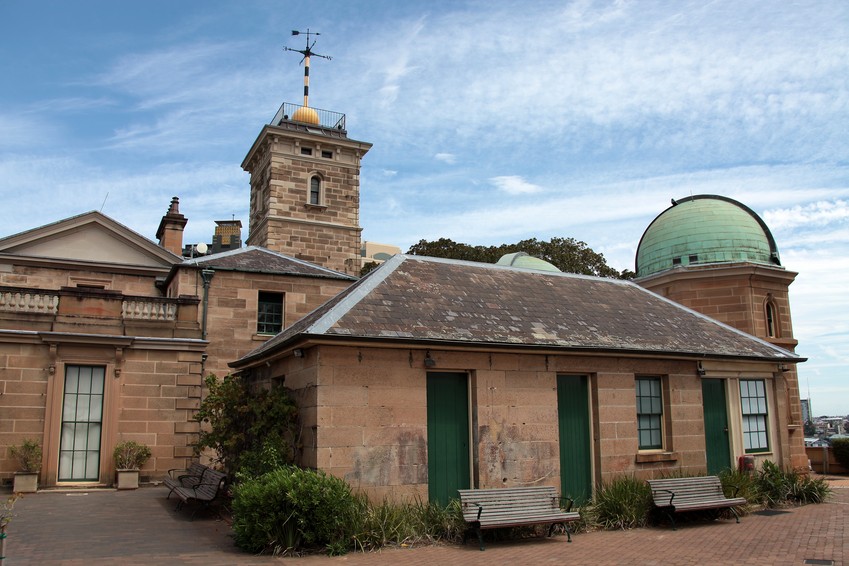SYDNEY OBSERVATORY
L'observatoire de Sydney est situé sur une colline maintenant connu sous le nom Observatory Hill (Colline de l'Observatoire) dans le centre de Sydney, en Nouvelle-Galles du Sud en Australie.
Le site a évolué à partir d'un fort construit sur "Windmill Hill" dans le début du XIXe siècle, en un observatoire astronomique au cours du XIXe siècle. Il est dorénavant un musée fonctionnel où les visiteurs du soir peuvent observer les étoiles et les planètes grâce à un télescope Schmidt-Cassegrain moderne de 40 centimètres et une lunette historique de 29 centimètres, construite en 1874, en faisant le plus ancien télescope en Australie en utilisation régulière.
Histoire
Le premier astronome du gouvernement australien, William Scott, fut nommé en 1856, et le travail sur le nouvel observatoire fut achevé en 1858.
Le premier astronome du gouvernement australien, William Scott, fut nommé en 1856, et le travail sur le nouvel observatoire fut achevé en 1858.
L'observatoire est un bâtiment construit avec la pierre particulière de la région : "sandstone" dans le style italianisant.
L'observatoire a également participé à la compilation du premier atlas de l'ensemble du ciel : Carte du Ciel (projet Astrographic Catalogue en anglais). La partie achevée à Sydney prit plus de 70 ans, de 1899 à 1971, et rempli 53 volumes.
En 1982, le gouvernement de Nouvelle-Galles du Sud décide que l'observatoire de Sydney soit transformé en musée de l'astronomie et ses champs associés dans ce qui est aujourd'hui le Powerhouse Museum.
--------------------------------------------
Sydney Observatory is located on a hill now known as Observatory Hill in the centre of Sydney, Australia.
The site evolved from a fort built on 'Windmill Hill' in the early 19th century to an astronomical observatory during the nineteenth century. It is now a working museum where evening visitors can observe the stars and planets through a modern 40 cm Schmidt-Cassegrain telescope and a historic 29 cm refractor telescope built in 1874, the oldest telescope in Australia in regular use.
Observatory
An early observatory was established in 1788 on Dawes Point, at the foot of Observatory Hill, in an ultimately unsuccessful attempt to observe in 1790 the return of a comet suggested by Edmond Halley of Halley's Comet fame.
An early observatory was established in 1788 on Dawes Point, at the foot of Observatory Hill, in an ultimately unsuccessful attempt to observe in 1790 the return of a comet suggested by Edmond Halley of Halley's Comet fame.
The Colony's second observatory was established at Parramatta in 1821 by Governor Sir Thomas Brisbane. In 1848, a new signal station was built by the Colonial Architect, Mortimer Lewis, on top of the fort wall on Windmill Hill. At the instigation of the Governor, Sir William Denison, it was agreed seven years later to build a full observatory next to the signal station.
